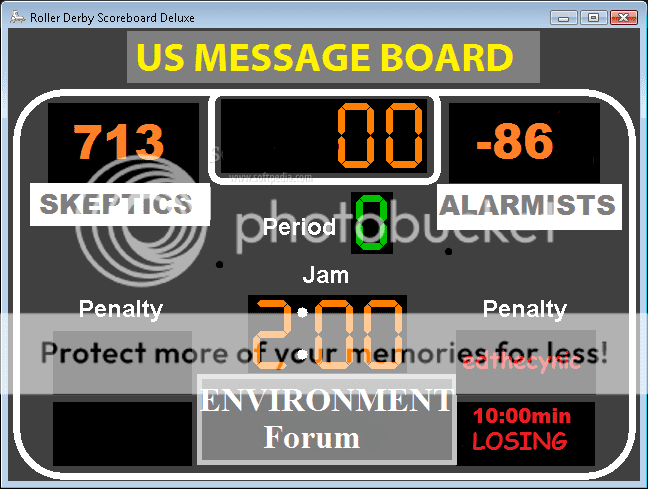edthecynic
Censored for Cynicism
- Oct 20, 2008
- 43,044
- 6,883
- 1,830
First of all, that is complete bullshit. The only people caught pulling "shenanigans" were deniers Christy and Spencer at the UAH, who cooked the satellite data by using the opposite sign to correct for diurnal satellite drift. But you know that.You are so funny! This decade is only the warmest with shenanigans. If they were to actually use ALL of weather stations instead of their cherry picked few in cities and at airports it would be cooler, but that's real science not the activist BS Hansen and company are now renowned for.The present decade is the warmest in the history of direct instrument measurement, so to deniers that means warming has leveled off.Ummm, no we havn't. We've said that the warming had levelled off. It also appear that we are entering into a cooling phase, but we won't know that for sure for another couple of years. The Earth doesn't have a thermostat that you switch on and off. It takes time for trends to become apparent.
As far as the op ed that Muller released, I don't see anything wrong with it except for the part where he ascribes the warming to human causes with no supporting evidence. He is an avowed warmist after all, but when he gets the paper through peer review we will see what he really has to say.Next, to CON$, we will enter a cooling phase of steady temperatures.

Mind you there have been no "cooling phases" for the last 100 years even though according to the natural cycle warming phases should be followed by cooling phases. For the last 100 years warming phases have been followed by level phases which are followed by new warming phases that begin at about the same level as the last warming phase left off.
And Muller is an avowed skeptic!
And Muller a sceptic?If you believe that you are a bigger moron then I thought. He's a warmist through and through and just like the others he too is invested heavily in the Green con, just not in their con, he's running his own con.
It will be interesting to see his peer reviewed paper when it comes out though. I am looking forward to reading his findings and learning what he thinks of the recent NOAA efforts to correct the faulty weather stations pointed out by Watts and his group.
But more importantly, stations near heat sources give LOWER anomaly readings, not higher, so removing will RAISE the WARMING temperature trend. And you know that also. Anomalies are measured against a 20 or 30 year AVERAGE of the temperature of the station. If the station is near a heat source that raises the average the anomaly is measured against, lowering the anomaly.
So removing stations near heat sources will have the opposite effect you deniers want and you will still cry foul!!!





